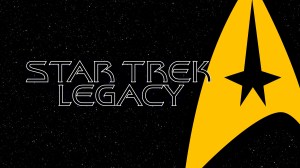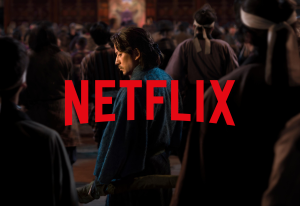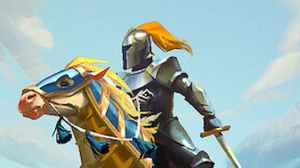Long before the Star Wars universe expanded into the sprawling saga loved by fans today, creator George Lucas had an even grander vision: a 12-movie epic that would delve far deeper into the galaxy’s history and future. This ambitious blueprint, first hinted at in a 1978 Time magazine article, outlined a saga far more extensive than the six films Lucas himself eventually brought to the screen (nine when counting the Disney-produced sequels). Lucas’ plans deepened the lore as related to the Skywalkers, which essentially erased the sequel trilogy as we know it, and introduced concepts that would evolve dramatically over decades.
Videos by ComicBook.com
The Genesis of a Galactic History Was Always a Central Focus

At the heart of Lucas’ early plan was a curious numbering system that placed the original trilogy— Star Wars: A New Hope, Star Wars: The Empire Strikes Back, and Star Wars: Return of the Jedi— not as the saga’s beginning, but as its middle. In Lucas’s initial outline, these formative tales of Luke Skywalker, Princess Leia, and Han Solo were designated as Episodes VI, VII, and VIII, suggesting a sprawling epic preceding their adventures. This placement shows that Lucas conceptualized Star Wars as a multi-generational saga. But this idea shifted over time, with the original trilogy initially seen as a pivotal, but not foundational, part of a much larger story.
Lucas’ early plans always aimed to craft a rich historical backdrop for his universe, exploring events far earlier than the rise of Darth Vader and the Galactic Empire. In this twelve-part framework, the Clone Wars were envisioned as a central conflict that spanned Episodes II, III, and IV. This is vastly different from how the prequels eventually panned out, with the Clone Wars only being a single, though pivotal, arc within the trilogy.

Lucas’ original notes dubs Episode I as a “prelude,” most likely a foundational world-building story that set the stage for the wartorn era that would follow. Though not explicitly stated in the notes, moving around the prequels and adding in a prelude hints that Lucas had a clear intention to build Star Wars from its very roots, further detailing the events that led to the galaxy’s state at the dawn of the original trilogy. The eventual prequel films, Star Wars: The Phantom Menace, Star Wars: Attack of the Clones, and Star Wars: Revenge of the Sith, while touching on the Clone Wars and Anakin Skywalker’s fall, ultimately condensed what was once planned as a broader, multi-film exploration of this era. Thanks to the creation of the animated series, Star Wars: The Clone Wars, some of these concepts were brought to life, greatly enriching Anakin and Obi-Wan’s background, as well as the political structure of the galaxy as a whole.
The thematic thread of the Clone Wars, central to Lucas’ early outline, would have fleshed out the Republic’s decline and the Jedi Order’s fateful mistakes that contributed to it. The search for a “chosen one” and the emergence of Palpatine’s devious plans were always critical elements, even as their specific dramatic beats and the timeline for significant plot points continued to evolve.
Early iterations of the story even contained different relationships, with, for example, Luke and Leia not always imagined as siblings, and Vader’s paternal connection to Luke being a later, impactful addition to the overall story.
The Saga’s Evolution Led to Uncharted Territories Beyond Familiar Trilogies

Beyond the core nine films (three prequels, three originals, three sequels), Lucas’s 12-movie plan included intriguing unknowns. Episodes IX through XI were left blank, providing space for future stories that were, at the time, undefined, while Episode XII was earmarked as the saga’s conclusive chapter. While Lucas had a broad framework for his series, the specific stories for the later films were yet to be fully imagined, leaving room for organic development or perhaps for entirely new avenues.
Over time, Lucas’ concept for these potential additional films began to take shape, at least in broad strokes. Ideas came to life that significantly veered off from the Skywalker Saga’s central points. For instance, discussions arose about a fourth trilogy that might explore a “microbiotic world” and introduce cosmic entities known as the “Whills,” who were said to control the universe and feed off the Force. While the Whills were eventually mentioned in Rogue One: A Star Wars Story, it would have been impossible for the plot to explore them deeper without compromising the overall trajectory of the story.
These concepts, such as the Whills, hinted at a much more philosophical and abstract direction for the saga, moving beyond the traditional good-versus-evil battles and digging into the very nature of the Force itself. Other less conventional ideas included films centered on Wookiees or Ewoks, illustrating a willingness to explore different corners and species of the Star Wars galaxy that would eventually be expanded upon in novels and comics.
While these specific ideas ultimately did not make it into the live-action films, elements of Lucas’ broader vision, particularly the exploration of the Force and its deeper mysteries, occasionally found their way into animated series and other content. The ultimate decision to streamline the saga, focus the first two trilogies solely around the Skywalkers, and the later decision to sell Lucasfilm to Disney, brought a new vision to Star Wars. However, the echoes of Lucas’ ambitious 12-film vision remain a fascinating testament to the boundless creative potential he saw in a galaxy far, far away.








